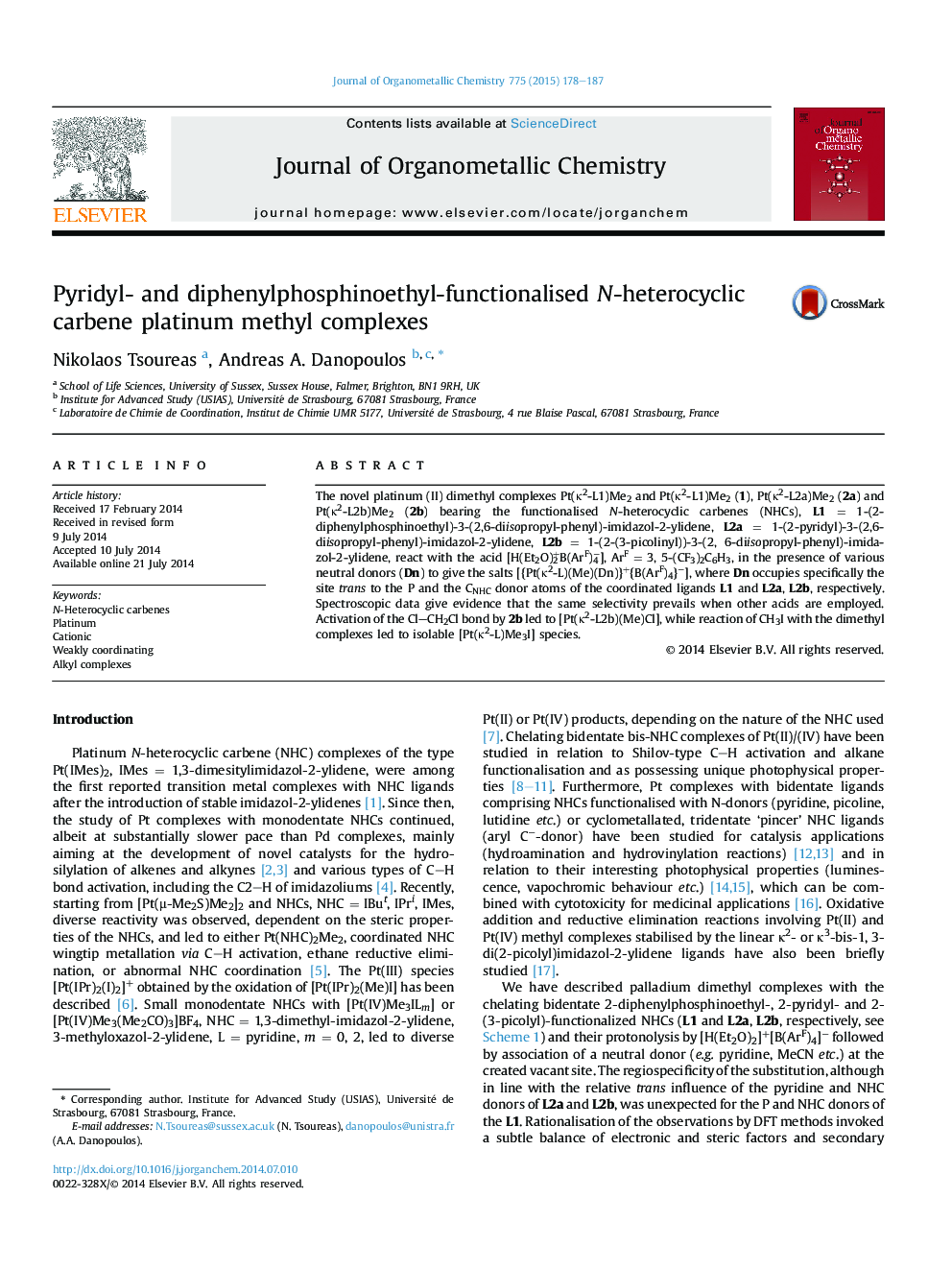| Article ID | Journal | Published Year | Pages | File Type |
|---|---|---|---|---|
| 1322210 | Journal of Organometallic Chemistry | 2015 | 10 Pages |
•We prepared neutral PtII dimethyl complexes with pyridine-functionalised NHCs.•We prepared neutral PtII dimethyl complexes with diphenylphosphinoethyl-functionalised NHCs.•We studied their reaction with acids HA, A = noncoordinating anion and neutral donors.•In phosphine–NHCs regioselective addition of the neutral donor occurs trans to P-.•In pyridine–NHCs regioselective addition of the neutral donor occurs trans to NHC.
The novel platinum (II) dimethyl complexes Pt(κ2-L1)Me2 and Pt(κ2-L1)Me2 (1), Pt(κ2-L2a)Me2 (2a) and Pt(κ2-L2b)Me2 (2b) bearing the functionalised N-heterocyclic carbenes (NHCs), L1 = 1-(2-diphenylphosphinoethyl)-3-(2,6-diisopropyl-phenyl)-imidazol-2-ylidene, L2a = 1-(2-pyridyl)-3-(2,6-diisopropyl-phenyl)-imidazol-2-ylidene, L2b = 1-(2-(3-picolinyl))-3-(2, 6-diisopropyl-phenyl)-imidazol-2-ylidene, react with the acid [H(Et2O)2+B(ArF)4−], ArF = 3, 5-(CF3)2C6H3, in the presence of various neutral donors (Dn) to give the salts [{Pt(κ2-L)(Me)(Dn)}+{B(ArF)4}−], where Dn occupies specifically the site trans to the P and the CNHC donor atoms of the coordinated ligands L1 and L2a, L2b, respectively. Spectroscopic data give evidence that the same selectivity prevails when other acids are employed. Activation of the Cl–CH2Cl bond by 2b led to [Pt(κ2-L2b)(Me)Cl], while reaction of CH3I with the dimethyl complexes led to isolable [Pt(κ2-L)Me3I] species.
Graphical abstractThe electronic and steric characteristics of functionalised NHC Pt complexes determine the site of electrophilic attack.Figure optionsDownload full-size imageDownload as PowerPoint slide
